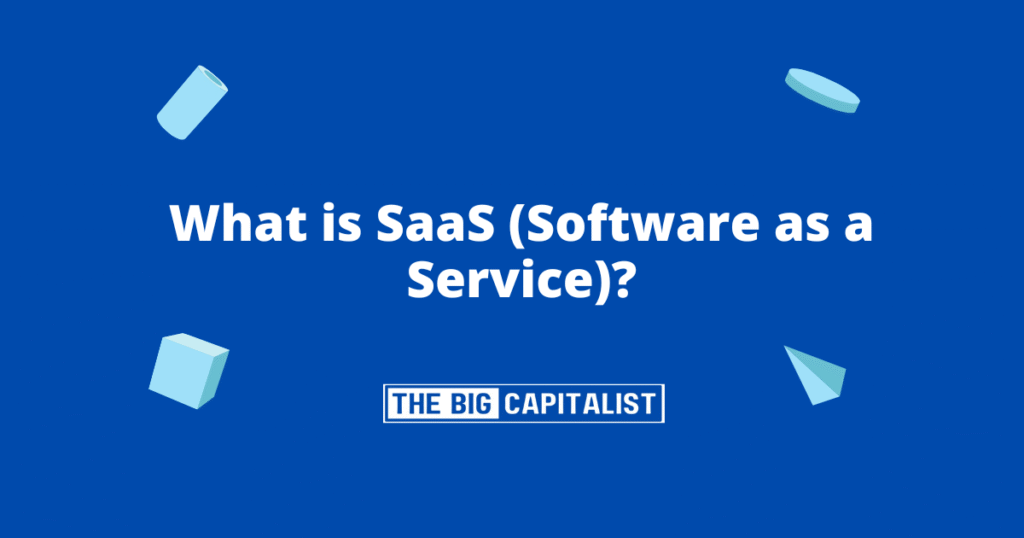In today’s fast-changing digital world, businesses and people are always looking for efficient and affordable software solutions. Enter Software as a Service (SaaS). This new way of delivering software has changed how we access and use software applications. SaaS is a big change from traditional software. It lets users access software without needing to install or maintain it. But what exactly is SaaS, and how does it benefit users? In this article, we will look at the basics of SaaS. We will discuss its benefits and why it is a popular choice for businesses and people worldwide.
SaaS is not just a technological advancement; it is a business model that has enabled companies to focus on their core competencies while leveraging software solutions that are maintained and updated by external providers. The SaaS model has democratized access to high-quality software, allowing small businesses and startups to compete with larger corporations by providing them with the same tools and capabilities. Moreover, SaaS has facilitated a global shift towards remote work, enabling teams to collaborate seamlessly across different geographical locations. This article delves into the core components of SaaS, highlighting its transformative impact on the software industry and its potential to shape the future of digital interactions.
Understanding SaaS: The Basics
SaaS, or Software as a Service, is a method of software delivery where applications are hosted by a service provider and made available to users over the internet. Unlike traditional software, which requires installation and maintenance on individual devices, SaaS allows users to access applications through a web browser, eliminating the need for hardware installations or software updates. This ease of access means that users can start using the software almost immediately, reducing the time and resources typically required for software deployment.
This model is a part of the broader category of cloud computing services, which also includes Infrastructure as a Service (IaaS) and Platform as a Service (PaaS). SaaS applications are typically subscription-based, with users paying a recurring fee to access the software and its updates. This subscription model provides businesses with predictable costs, eliminating the surprise expenses associated with traditional software maintenance and upgrades. Furthermore, SaaS applications often come with tiered pricing plans, allowing businesses to choose a plan that best suits their needs and budget.
How SaaS Works
In a SaaS model, the software provider hosts the application on their servers and manages all the technical aspects, including security, availability, and performance. Users simply need an internet connection to access the application via a web browser or a dedicated app. This centralized hosting allows providers to efficiently roll out updates and patches, ensuring that all users have access to the latest features and security enhancements without any delay.
Key Features of SaaS
- Accessibility: As long as you have internet access, you can use SaaS applications from anywhere, on any device. This ubiquitous access is particularly beneficial for businesses with remote or distributed teams, as it allows employees to stay connected and productive regardless of their physical location.
- Scalability: SaaS solutions can easily scale to accommodate growing business needs, allowing companies to add or remove users as needed. This scalability is not only about user numbers but also about functionality, as businesses can often upgrade or downgrade their service plans to match their operational requirements.
- Automatic Updates: Users benefit from regular updates and new features without the hassle of manual installations. This feature ensures that users always have access to the latest tools and improvements, enhancing productivity and security.
- Cost-Effectiveness: Subscription pricing models reduce the need for large upfront investments in software licenses and hardware. By converting capital expenses into operational expenses, businesses can better manage their budgets and allocate resources more effectively.
Benefits of Using SaaS
The SaaS model offers numerous advantages for both businesses and individual users. Here are some of the key benefits:
Cost Savings
With SaaS, businesses can avoid the high costs associated with purchasing, installing, and maintaining traditional software. The subscription-based pricing model allows companies to pay for only what they need, reducing overall expenses. Additionally, because the software is hosted in the cloud, there is no need for expensive hardware or IT infrastructure, further lowering costs.
SaaS also minimizes the costs related to IT staff and maintenance, as the service provider handles all technical aspects, including updates and security. This outsourcing of IT functions allows companies to focus more on strategic initiatives rather than day-to-day software management. For small businesses and startups, in particular, these cost savings can be significant, enabling them to allocate resources to growth and innovation.
Flexibility and Scalability
SaaS solutions offer unmatched flexibility, enabling businesses to scale their software usage up or down based on their current needs. This adaptability is particularly beneficial for growing companies or those with fluctuating demands. As business needs evolve, SaaS applications can be adjusted quickly and easily, ensuring that companies have the tools they need to remain competitive.
Moreover, the ability to scale on-demand allows businesses to experiment with new ideas and processes without committing to long-term investments. This agility can be a significant advantage in fast-paced industries where being able to pivot quickly is crucial. By providing the flexibility to adapt to changing market conditions, SaaS empowers businesses to innovate and expand with confidence.
Easy Collaboration
Since SaaS applications are accessible from any device with an internet connection, they facilitate collaboration among team members, regardless of their location. This is especially important in today’s remote work environments, where employees need to collaborate effectively from different locations. Real-time collaboration features, such as shared documents and communication tools, enable teams to work together seamlessly and efficiently.
Collaboration is further enhanced by the integration capabilities of many SaaS applications, which allow for smooth interaction with other software tools and platforms. This interconnectedness ensures that data flows freely across applications, minimizing silos and promoting a more cohesive work environment. As remote work becomes more prevalent, the collaborative nature of SaaS solutions will continue to play a critical role in maintaining team productivity and cohesion.
Enhanced Security
SaaS providers invest heavily in security measures to protect their users’ data. This includes encryption, regular security audits, and compliance with industry standards. As a result, users can have peace of mind knowing their information is secure. By utilizing state-of-the-art security technologies, SaaS providers can often offer better protection than individual companies could achieve on their own.
Moreover, the centralized nature of SaaS means that security updates and patches can be applied swiftly across all users, minimizing vulnerabilities and ensuring compliance with the latest security standards. This proactive approach to security helps mitigate risks associated with data breaches and cyber threats, providing an additional layer of protection for sensitive business information.
Popular SaaS Platforms
SaaS has gained popularity across various industries, with a wide range of applications available to meet diverse needs. Some of the most widely used SaaS platforms include:
Customer Relationship Management (CRM)
Platforms like Salesforce and HubSpot help businesses manage customer interactions, streamline sales processes, and improve customer service. These CRM solutions provide valuable insights into customer behavior and preferences, enabling businesses to tailor their marketing strategies and improve customer retention.
CRMs are also essential for sales teams, offering tools for tracking leads, managing pipelines, and automating routine tasks. By centralizing customer data, these platforms ensure that all team members have access to the most up-to-date information, improving communication and collaboration across departments. As businesses continue to focus on customer-centric strategies, CRM platforms will remain a critical component of successful operations.
Collaboration and Productivity
Tools like Microsoft 365 and Google Workspace offer comprehensive suites of applications for document creation, email, and team collaboration. These platforms provide a cohesive environment where teams can work on projects together, share files, and communicate in real-time, regardless of their physical location.
The integration capabilities of these tools allow for seamless workflows, reducing the time spent switching between applications and enhancing productivity. As remote work continues to rise, the demand for robust collaboration and productivity tools will only increase, driving further innovation in this space. By offering scalable solutions that meet the needs of diverse teams, these platforms play a vital role in maintaining organizational efficiency and effectiveness.
Enterprise Resource Planning (ERP)
SaaS ERP solutions, such as Oracle NetSuite and SAP, assist businesses in managing their core processes, including finance, human resources, and supply chain management. By providing a unified platform for all business functions, ERP systems enable organizations to streamline operations and improve decision-making through real-time data insights.
The modular nature of SaaS ERP solutions allows businesses to customize the system to their specific needs, adding or removing modules as required. This flexibility is particularly beneficial for companies undergoing rapid growth or transformation, as it allows them to adapt their systems to evolving business requirements. As organizations seek to optimize their operations and gain a competitive edge, the adoption of SaaS ERP solutions is expected to continue growing.
Communication and Video Conferencing
Applications like Zoom and Slack facilitate seamless communication and collaboration within teams, making remote work more efficient and productive. These tools have become essential in maintaining team connectivity, offering features such as video conferencing, instant messaging, and file sharing.
The ease of use and reliability of these platforms have made them indispensable for businesses of all sizes, particularly in the era of remote work. By enabling teams to communicate effectively across distances, these tools help maintain organizational cohesion and ensure that projects stay on track. As remote work becomes more entrenched in business operations, the role of communication and video conferencing tools will continue to expand.
The Future of SaaS
As technology continues to advance, the SaaS model is expected to evolve and expand further. Here are some trends to watch for in the future of SaaS:
Artificial Intelligence and Machine Learning Integration
AI and machine learning are becoming integral components of SaaS applications, enhancing functionality and enabling more personalized user experiences. These technologies can automate tasks, provide data-driven insights, and improve decision-making processes. By leveraging AI, SaaS applications can offer predictive analytics, helping businesses anticipate trends and make more informed strategic decisions.
The integration of machine learning allows SaaS applications to continually improve and adapt to user behavior, offering increasingly relevant and efficient solutions. As these technologies mature, their impact on SaaS will likely lead to even more innovative features and capabilities, transforming the way businesses operate and interact with their software.
Vertical SaaS Solutions
While traditional SaaS offerings cater to a wide range of industries, vertical SaaS solutions are designed to address the specific needs of particular sectors. This trend is gaining traction as businesses seek more tailored solutions to meet their unique requirements. By focusing on niche markets, vertical SaaS providers can offer specialized functionality that addresses industry-specific challenges and opportunities.
As businesses continue to demand more customized solutions, the growth of vertical SaaS is expected to accelerate. These tailored applications can provide a competitive advantage by offering features and insights that are directly relevant to a company’s industry, enabling more effective decision-making and operational efficiency.
Enhanced Security Measures
As cyber threats continue to evolve, SaaS providers are prioritizing security enhancements to protect user data. This includes implementing advanced encryption techniques, multi-factor authentication, and continuous monitoring for potential vulnerabilities. By staying ahead of emerging threats, SaaS providers can ensure that their applications remain secure and trustworthy.
In addition to technical measures, SaaS providers are also focusing on educating users about best practices for data security, helping them safeguard their information more effectively. As security continues to be a top concern for businesses and individuals alike, the emphasis on robust security measures will remain a key factor in the ongoing success and adoption of SaaS solutions.
Conclusion
SaaS has revolutionized the way we access and utilize software applications, offering a flexible, cost-effective, and secure solution for businesses and individuals. With the ability to scale and adapt to changing needs, SaaS is poised to remain a dominant force in the software industry. As technology continues to advance, we can expect even more innovative SaaS solutions that will further enhance our digital experiences.
Whether you’re a business looking to streamline operations or an individual seeking convenient software access, SaaS offers a compelling solution that meets a wide range of needs. By understanding the fundamentals of SaaS and staying informed about emerging trends, you can make informed decisions about the software solutions that best suit your requirements. As SaaS continues to evolve, it will undoubtedly play a pivotal role in shaping the future of technology and business.
Frequently Asked Questions (FAQ)
1. What is SaaS (Software as a Service)?
SaaS is a cloud-based software delivery model where users access applications via the internet, without installing or maintaining them on local devices.
2. How does SaaS work?
The provider hosts and manages the software, while users log in through a web browser or app. Updates, security, and maintenance are all handled by the provider.
3. What are the key benefits of using SaaS?
SaaS offers cost savings, easy access, automatic updates, and scalability—ideal for businesses of all sizes, especially those with remote teams.
4. What are some popular SaaS examples?
Well-known platforms include Google Workspace, Microsoft 365, Salesforce, Zoom, and Slack, covering productivity, CRM, and communication needs.
















